Author: Andy Carter
While base malt accounts for a substantial portion of the grist in most beer recipes, many styles require the use of specialty grains to contribute unique characteristics and color, a common one being caramel malt, which is traditionally a barley product. Given its relatively high gluten content, those who are sensitive to this particular protein have to rely on alternative grains such as millet, which is naturally gluten-free.
Millet can be malted and kilned just like barley, meaning there is a wide variety available to brewers, including caramel malt. Similar to the process of making caramel malt from barley, millet is first allowed to germinate before being stewed for a few hours at specific temperatures to provide a range of colors and flavors.
I’m fortunate enough to not have issues with gluten, though I enjoy experimenting with unique ingredients in my brewing to see what kinds of characteristics they impart. Curious of the impact using caramel millet malt has on beer, I picked some up and decided to compare it to the same beer made with the same color caramel barley malt.
| PURPOSE |
To evaluate the differences between an American Amber Ale made with caramel barley malt and one made with caramel millet malt of the same color.
| METHODS |
I went with a simple American Amber Ale recipe for this xBmt because I felt it was a good style to exemplify any impact of the different caramel malts.
Mill-et Real Good
Recipe Details
| Batch Size | Boil Time | IBU | SRM | Est. OG | Est. FG | ABV |
|---|---|---|---|---|---|---|
| 5.5 gal | 30 min | 33.4 | 15.5 SRM | 1.05 | 1.014 | 4.73 % |
| Actuals | 1.05 | 1.014 | 4.73 % | |||
Fermentables
| Name | Amount | % |
|---|---|---|
| Brewers Malt | 8.5 lbs | 80 |
| Caramel 90L - Barley OR Millet | 1 lbs | 9.41 |
| Munich II | 1 lbs | 9.41 |
| Roasted Barley | 2 oz | 1.18 |
Hops
| Name | Amount | Time | Use | Form | Alpha % |
|---|---|---|---|---|---|
| Simcoe | 10 g | 60 min | Boil | Pellet | 13.3 |
| Simcoe | 26 g | 15 min | Boil | Pellet | 13.3 |
Yeast
| Name | Lab | Attenuation | Temperature |
|---|---|---|---|
| Flagship (A07) | Imperial Yeast | 77% | 32°F - 32°F |
Notes
| Water Profile: Ca 35 | Mg 5 | Na 8 | SO4 61 | Cl 35 |
Download
| Download this recipe's BeerXML file |
I started my brew day by adding identical volumes of RO water to separate BrewZilla units, adjusting them to the same target profile, then setting the controllers to heat them up.
Given how small millet is, I used my old Corona mill to give it a proper crush.
I then milled the rest of the grains for both batches using my Monster Mill.
Once the water for each batch was adequately heated, I incorporated the grains then checked to make sure both were at the same target mash temperature.
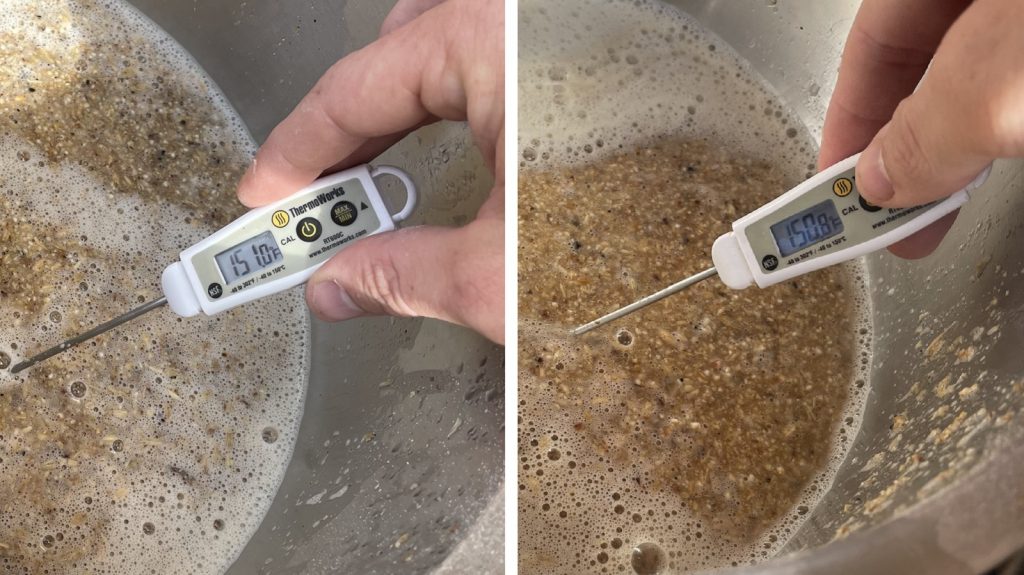
At 15 minutes into each mash, I pulled samples to measure the pH and found they were exactly the same.
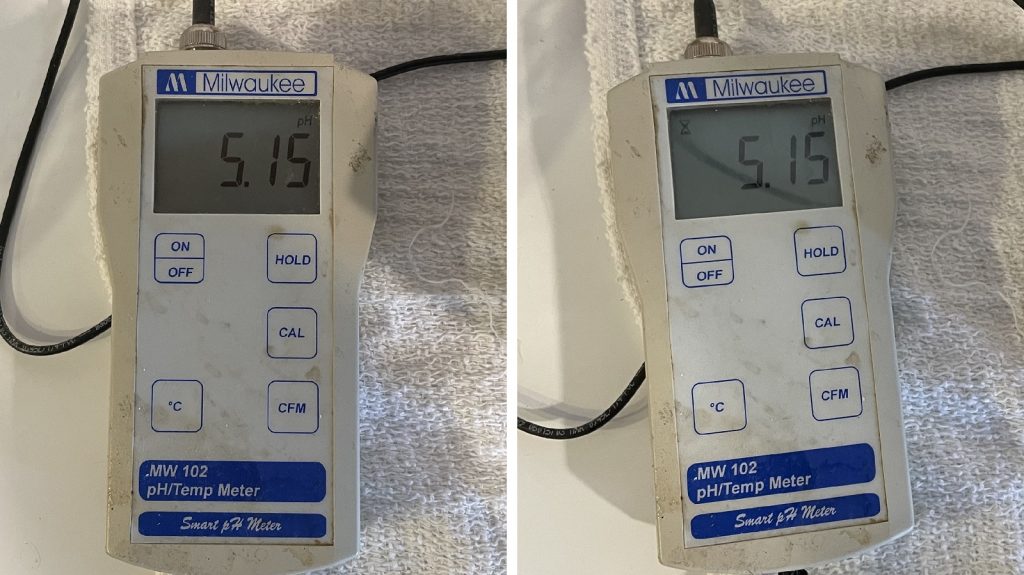
While the mashes were resting, I prepared the kettle hop additions.
Once each 60 minute mash was complete, I sparged to collect the same pre-boil volume then boiled the worts for 60 minutes before chilling them on their way to sanitized fermenters.
Refractometer readings showed both worts achieved the same target OG.
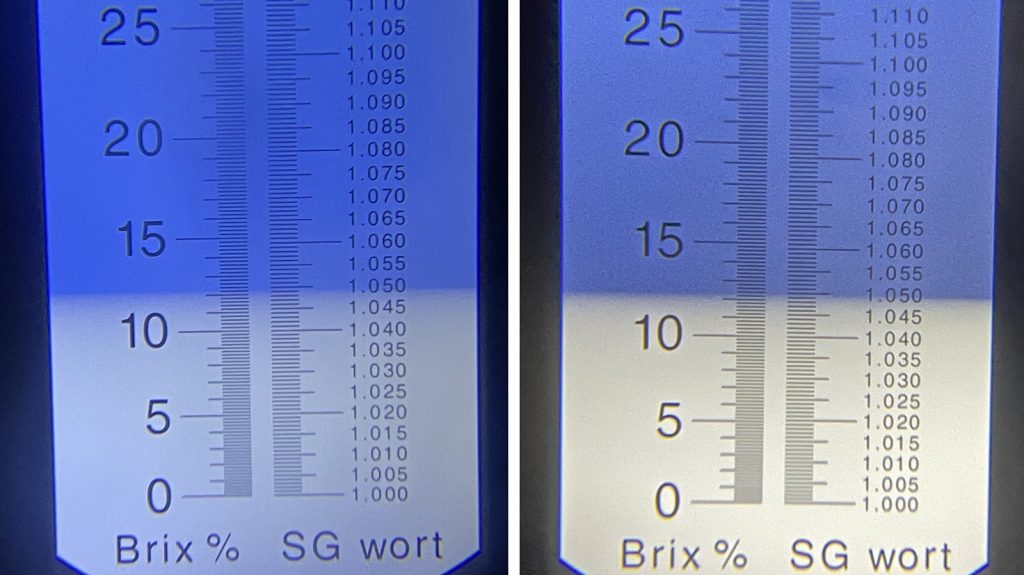
The filled carboys were placed in my chamber and left to finish chilling to my desired fermentation temperature of 64°F/18°C for a few hours before I pitched a pouch of Imperial Yeast A07 Flagship into each.
After a week, I raised the temperature in the chamber to 70°F/21°C and let the beers sit for an additional week before taking hydrometer measurements showing they reached the same FG.
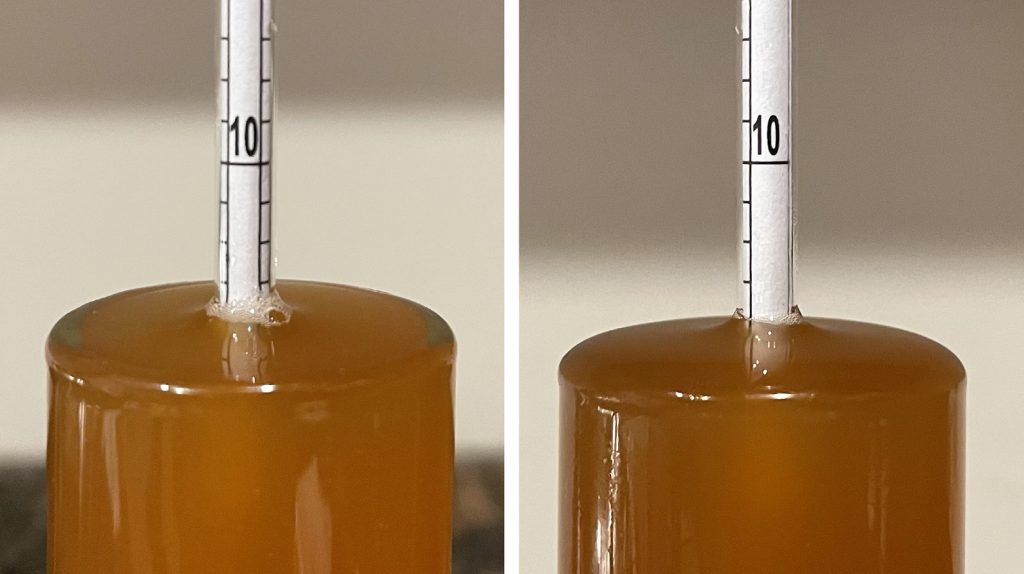
At this point, I racked the beers to sanitized kegs.
The filled kegs were placed in my keezer and left on gas for a week before I began serving them to tasters for evaluation.
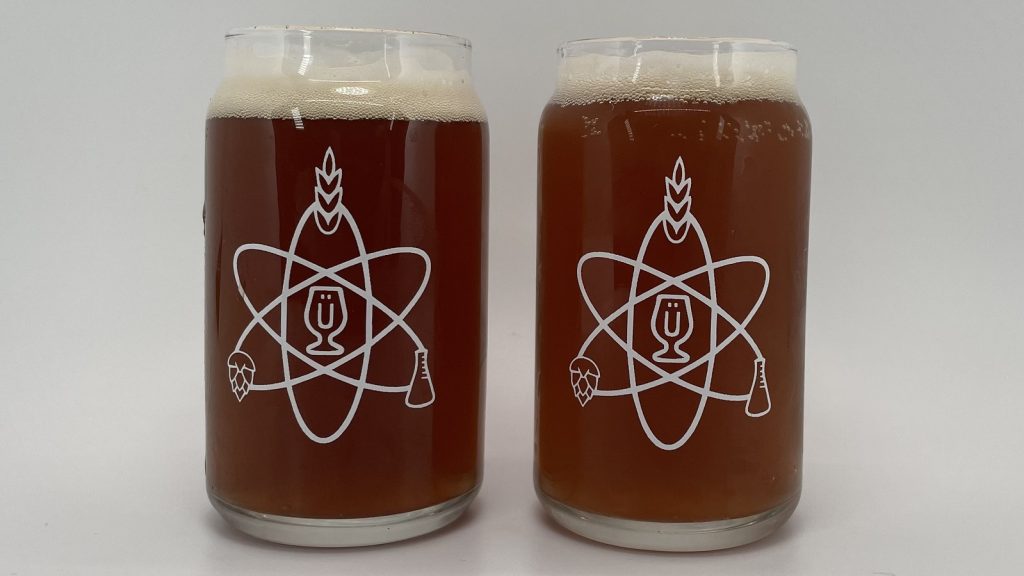
| RESULTS |
Cheers to the SoCal Cerveceros homebrew club for letting me collect data at one of their monthly meetings!
A total of 25 people of varying levels of experience participated in this xBmt. Each participant was served 1 sample of the beer made with barley caramel malt and 2 samples of the beer made with millet caramel malt in different colored opaque cups then asked to identify the unique sample. While 13 tasters (p<0.05) would have had to accurately identify the unique sample in order to reach statistical significance, only 7 did (p=0.78), indicating participants in this xBmt were unable to reliably distinguish an American Amber Ale made with approximately 10% barley caramel 90 malt from one made with the same amount millet caramel 90 malt.
My Impressions: Out of the 5 semi-blind triangle tests I attempted, I correctly chose the odd-beer-out 3 times, which while somewhat consistent, isn’t perfect, indicating the beers were more similar than they were different. I perceived both as having a refreshing blend of light citrus and pine hop character paired with dark caramel and toasty malt flavor. While I thought both beers were great, I had a slight preference for the one made with barley caramel malt.
| DISCUSSION |
Barley malt is, without question, the most common grain used in brewing, capable of self-conversion while contributing a range of desirable flavors. However, there are a number of lesser-known grains that can also be malted for use in beer, some of which have the benefit of being gluten-free, making beer available to those who otherwise can’t drink it for health reasons. Interestingly, tasters in this xBmt were unable to reliably distinguish an American Amber Ale made with nearly 10% barley caramel malt from one made with the same amount of millet caramel malt of the same color.
Given the growing interest in gluten-free brewing over the last few years, there’s been a lot of talk about the flavor differences between barley and the various gluten-free grains used to produce such beers. While it seems the general verdict is that each grain does contribute unique characteristics, this typically refers to beers made fully with a specific type, and it’s possible the lack of a perceived difference in this xBmt is due to the fact the crystal malts accounted for 10% of the total grist.
Having never brewed with millet before, I admittedly expected these beers to be noticeably different and was surprised to discover how similar they were. Despite my bias, my own performance on a series of triangle tests was inconclusive, and in my opinion, the beers were far more similar than they were different. While I’ve no personal reason to continue brewing with millet crystal malt, these results lead me to believe it may be an ideal alternative to barley for those who cannot tolerate gluten. I look forward to comparing beers made with larger proportions of barley alternatives, as well as exploring other types of gluten-free grains.
If you have any thoughts about this xBmt, please do not hesitate to share in the comments section below!
Support Brülosophy In Style!
All designs are available in various colors and sizes on Amazon!
Follow Brülosophy on:
FACEBOOK | TWITTER | INSTAGRAM
If you enjoy this stuff and feel compelled to support Brulosophy.com, please check out the Support page for details on how you can very easily do so. Thanks!


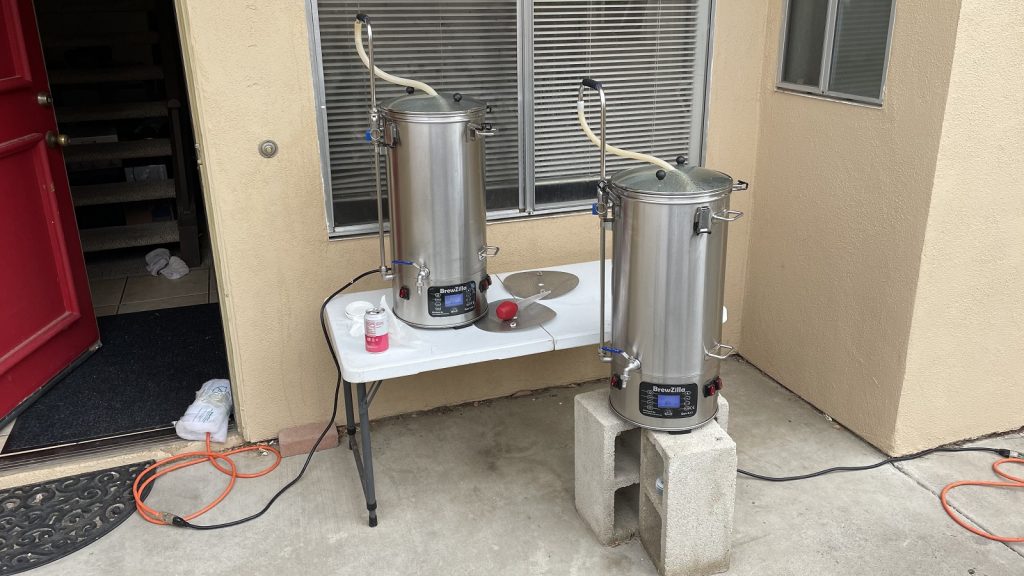

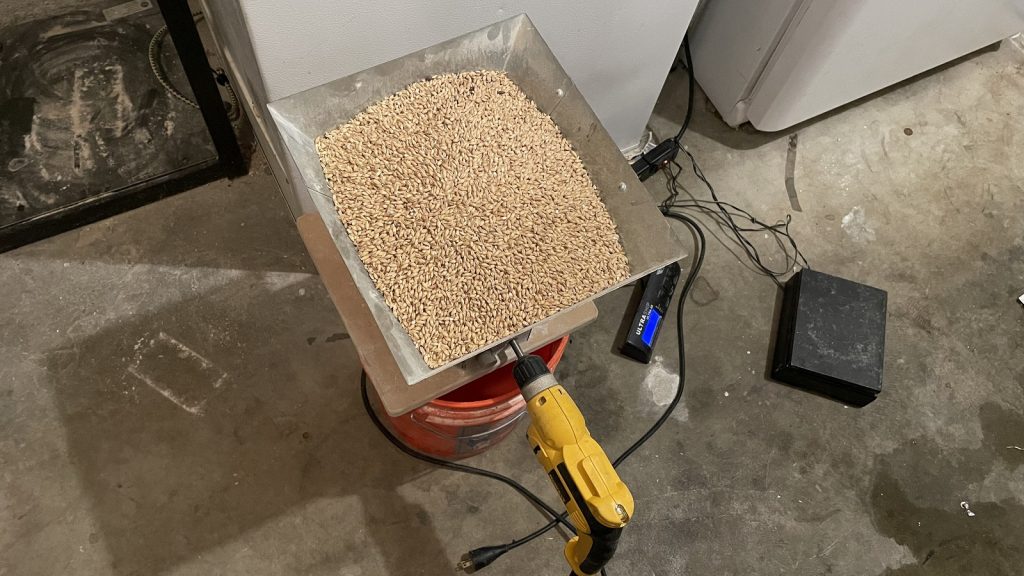
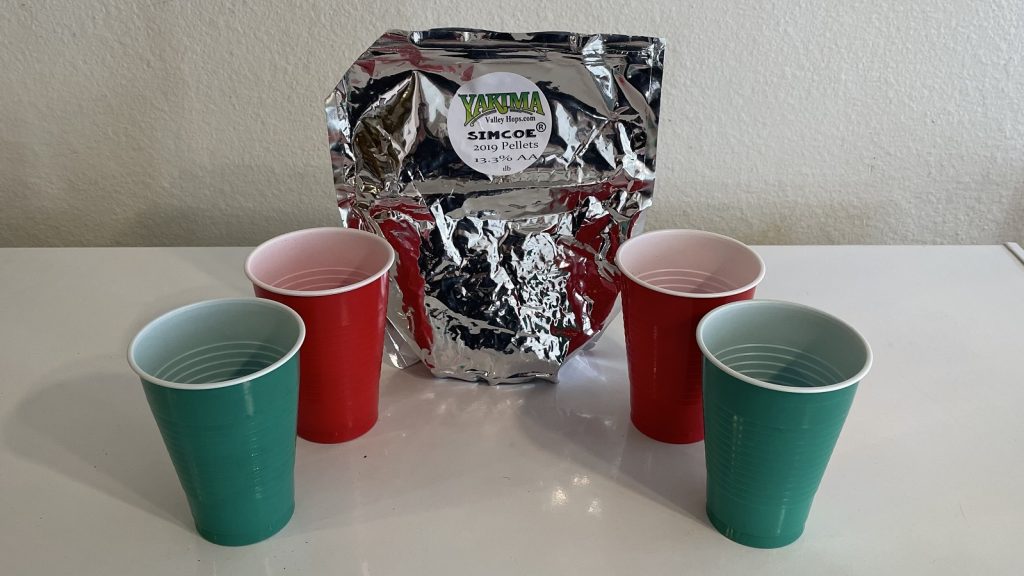
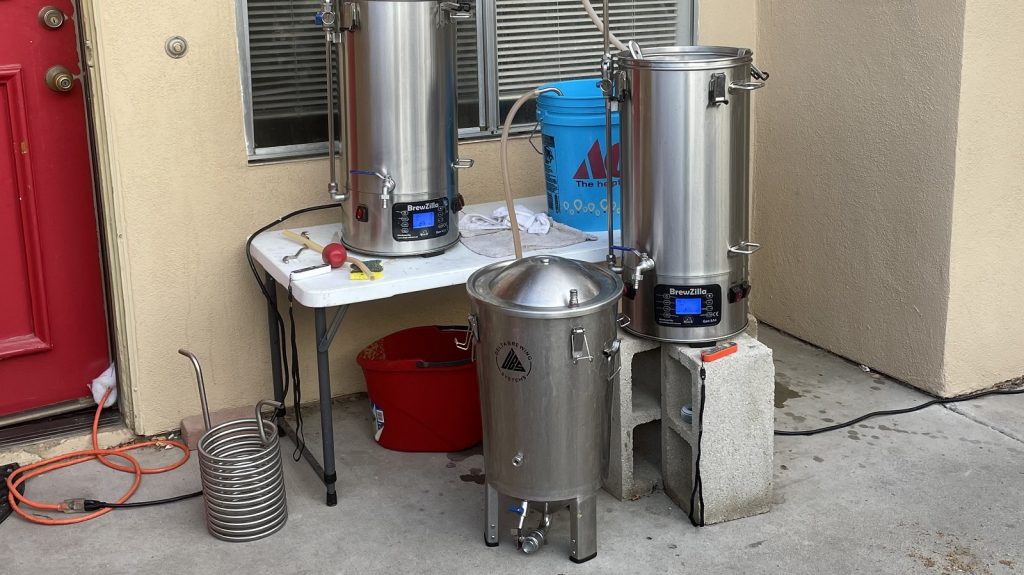
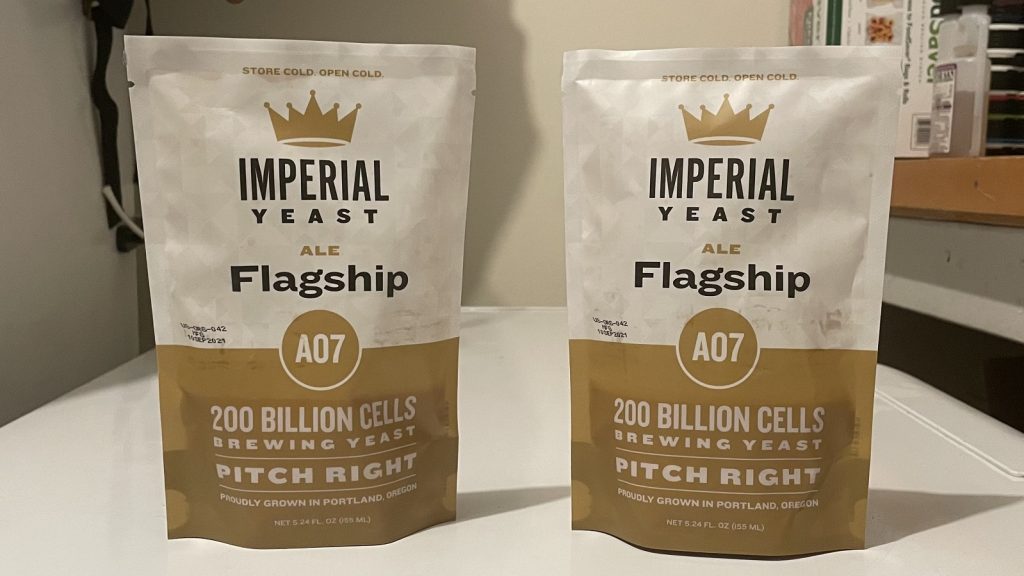
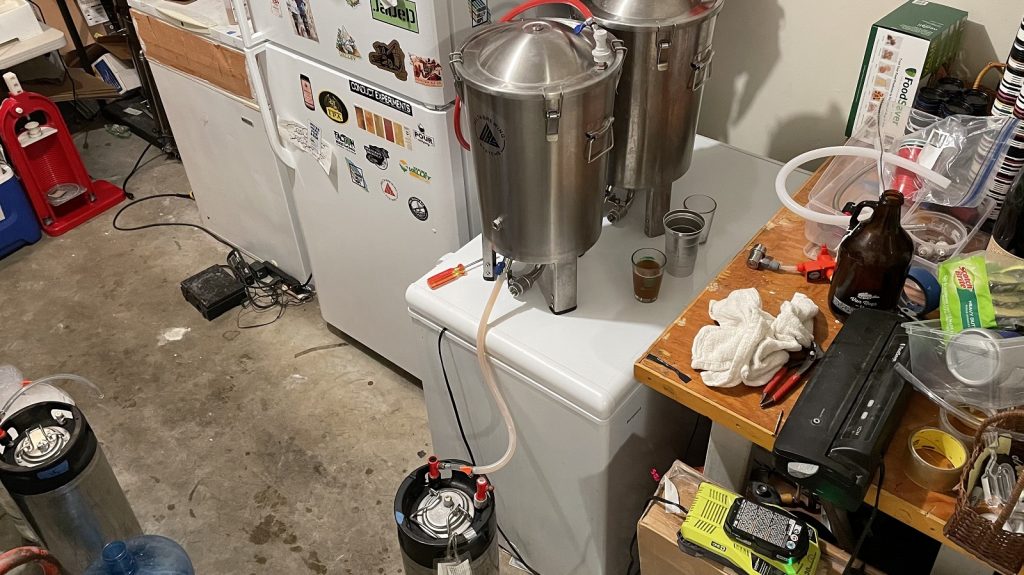












9 thoughts on “exBEERiment | Caramel Malt: Barley vs. Millet In An American Amber Ale”
3 out of 5 sounds like guessing. How could you prefer one over the other when you can’t actually tell them apart. Tell me you picked the right one 45 out of 50 times and I will believe it is not a guess. Nice experiment, though.
Hey guys.The Gluten Free Brewer and Maltster here. Great to see you guys using alternate malted grains here for experiments.
I’d love reading your experiments and I reckon they really help homebrewers not sweat the little things and enjoy this great hobby. I hope to see more alternative grain experiments.if you ever get the chance.
Cheers.
What is the PH meter you are using?
I thought most PH meter probes can be damage at higher temps. Curious to know where I can get one that functions at mash temps
With such a small proportion of millet malt, it’s not surprising there wasn’t much flavor difference. I’ve brewed a lot of with millet and it is quite different from barley. You might want to repeat the experiment with the base malt swapped out instead.
I’ll defend it though on the grounds that Caramel 90L is potentially a variable where millet vs. barley might make a difference.
Caramel is potent stuff that punches above its weight, and while I’d assume Caramel made from 6 row vs 2 row barley might be too subtle to notice, the potential for a pound of caramel barley malt to be different from carmel buckwheat or millet seems like something that might not be quite so clear.
Although I’d like to add I agree that an experiment based on swapping base malt would be a great thing to read. All of these tests are fun, regardless of which side the numbers fall.
Unlike some experiments, I didn’t have a strong feeling which way it would go. It would be interesting to see Take 2 with a comparison of 50% or even more of the base malt swapped out with a gluten free malt, and try to zoom in on the point where it’s noticable.
Millet is one of the few alternative grains I enjoy the flavor of – I use it in bread all the time. I’d be interested in trying this myself. Where did you get your Cara-millet from?
Grouse Malt House in Colorado produces it and home brewers in N America can buy from https://www.glutenfreehomebrewing.com/STORECategory/131/Malt-Grain.html.
Outside of N America check this wiki resources page: https://zerotolerance.mywikis.net/wiki/Resources